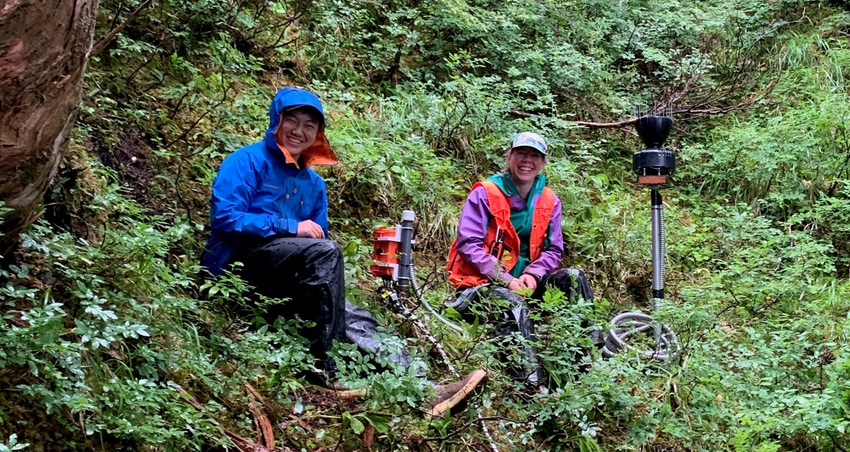May 17, 2021

A student-driven lab at Oregon State University is celebrating its fifth anniversary with the development of environmental sensing devices that aid a variety of groups, including vineyard managers, agencies that monitor landslides and scientists focused on fish conservation.
The Openly Published Environmental Sensing (OPEnS) lab works with researchers and professors at Oregon State and other universities, as well as private companies, to build devices used locally and worldwide by the ecological science and engineering community.
The lab employs several staff members, as well as 30 undergraduate students from Oregon State’s colleges of agricultural sciences, engineering and science. Students are paired up with researchers who reach out to the lab, and using tools in the lab – including soldering stations, 3D printers and laser cutters – the students build the requested devices.
“The lab has really exploded in popularity since we got started in 2016,” said John Selker, principal investigator for the lab and an Oregon State distinguished professor of biological and ecological engineering. “We are filling a need for researchers and at the same time providing an unparalleled experience for students.”
Undergraduate students have been the first author on six peer-reviewed papers and developed a dozen devices that are being used in the field. The lab is currently working on 14 projects, including:
SitkaNet, which aims to gather and study soil and weather data to better understand the conditions that cause landslides. Students have developed a customized sensor system that allows monitoring of multiple potential landslide initiation points. The system is less expensive, smaller and easier to install than current commercially available options. It measures soil moisture and temperature, atmospheric pressure and temperature, humidity, well pressure and rainfall and transmits data wirelessly in real time. It’s currently operating outside Sitka, Alaska. This project is in partnership with the Sitka Sound Science Center and Annette Patton and Josh Roering of the University of Oregon. Max Chu and Emily Pannell are the students involved.
Smart Rock, a piece of PVC pipe outfitted with a suite of sensors that monitor water depth, temperature, turbidity and salinity of small, remote or seasonal streams. Current hydrological modeling is missing data from these streams, which provide important habitat. Smart Rock is designed to be built by anyone and currently costs about $250. Colin Hale-Brown and Martin Escoto are the students involved.
The Dendrometer, which provides an improved method to monitor how much water grapevines are receiving. Additional agricultural demand for freshwater in the face of climate change requires better irrigation management solutions to maximize the use of limited water resources. Soil water deficits can significantly reduce plant growth and development, which dictates the quantity and quality of the crop. Dendrometers, which continuously measure small fluctuations in plant stem diameter throughout the day, which directly correlates to water stress, are a tool to improve irrigation management, but they are expensive, bulky and not very reliable. The automated dendrometer tailored for a grapevine that was created at the OPEnS Lab alleviates failure points. Mass deployment of these automated dendrometers has the potential to provide a continuous picture of vineyard water stress, valuable data for vineyard irrigation management. Cameron Clonch, Bryson Goto, and Mark Huynh are the students involved. They are working with Alexander Levin, an Oregon State viticulturist.
The eDNA Sampler, which aims to increase the efficiency of eDNA sampling, a technique that involves collecting traces of DNA from an environment, such as water, as an organism moves through it. eDNA provides scientists and researchers a non-invasive way to detect and quantify species. However, traditional eDNA sampling consists of manually filtering water, which is labor and cost intensive, especially in remote locations. This eDNA Sampler provides an affordable, open-sourced, remotely deployable, fully automated and customizable alternative. Alissa Bergquist, Aaron S Arvidson, Nikhil Wandhekar, Torrey Menne, Kawin Pechetratanapanit, Nathan I Jesudason and Bao Nguyen are the students involved.
The National Science Foundation, U.S. Department of Food and Agriculture and industry partners have funded the OPEnS lab.
Source: Oregon State University, which is solely responsible for the information provided and is wholly owned by the source. Informa Business Media and all its subsidiaries are not responsible for any of the content contained in this information asset.
About the Author(s)
You May Also Like




